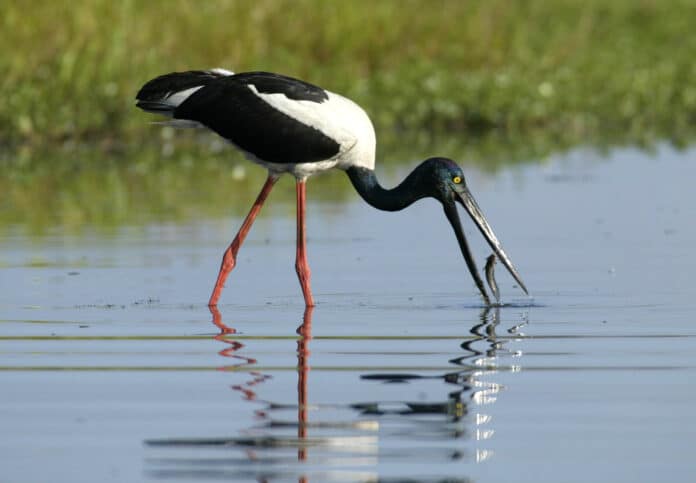Hunter birdwatchers are aflutter after confirmed sightings of a pair of Black-necked Storks at Hexham Swamp earlier this month.
The adult pair of the endangered birds were seen by members of the Hunter Bird Observers Club (HBOC) caring for two chicks in a nest at the popular waterway in recent weeks.
Last seen two years ago, the breed was thought to have returned to its native home in the Northern Territory.
HBOC member Ann Lindsey said the sightings were very exciting as the stork rarely breeds this far south and is classified as endangered in NSW.
“It is the only species of stork found in Australia and more commonly found in the Northern Territory, where it is also known as the Jabiru,” she said.
The distinctive black and white waterbirds stand 1.3m tall, with a huge wingspan up to two metres.
“The head and neck are black with a beautiful iridescent green and purple sheen – a truly stunning bird to see,” Ms Lindsey said.
“In August of this year, HBOC became aware that two adult storks were attending a nest in Hexham Swamp.
“Over the following weeks it was established that there were two chicks in the nest and in October they were big enough to be banded.
“This week, HBOC members observed that the adults took the young fledglings from the nest to trees not too far away.
“This is only the third confirmed breeding event in the lower Hunter Estuary, the others being in 2017 and 2018 at Tomago.”
HBOC vice president Mick Roderick said that floodplain wetlands were key habitat for the species and the vast 2,000-hectare Hexham Swamp was ideal for the storks to build their large nests in tall trees close to water.
“The Hexham Swamp Rehabilitation Project saw the wetland transform over the last ten years into a mosaic of valuable habitat types including estuarine wetland, open water, saltmarsh and mudflats,” he said.
“The project re-instated tidal inundation into Ironbark Creek by opening the floodgates in stages to improve the water quality and restore a plentiful supply of the storks’ favourite food source – eels.
“The storks also feed on fish, frogs and insects.
“The NSW breeding population has been estimated at only 75 pairs, so this is very significant for the endangered storks to be breeding here.
“HBOC will continue to monitor the family of storks.”







